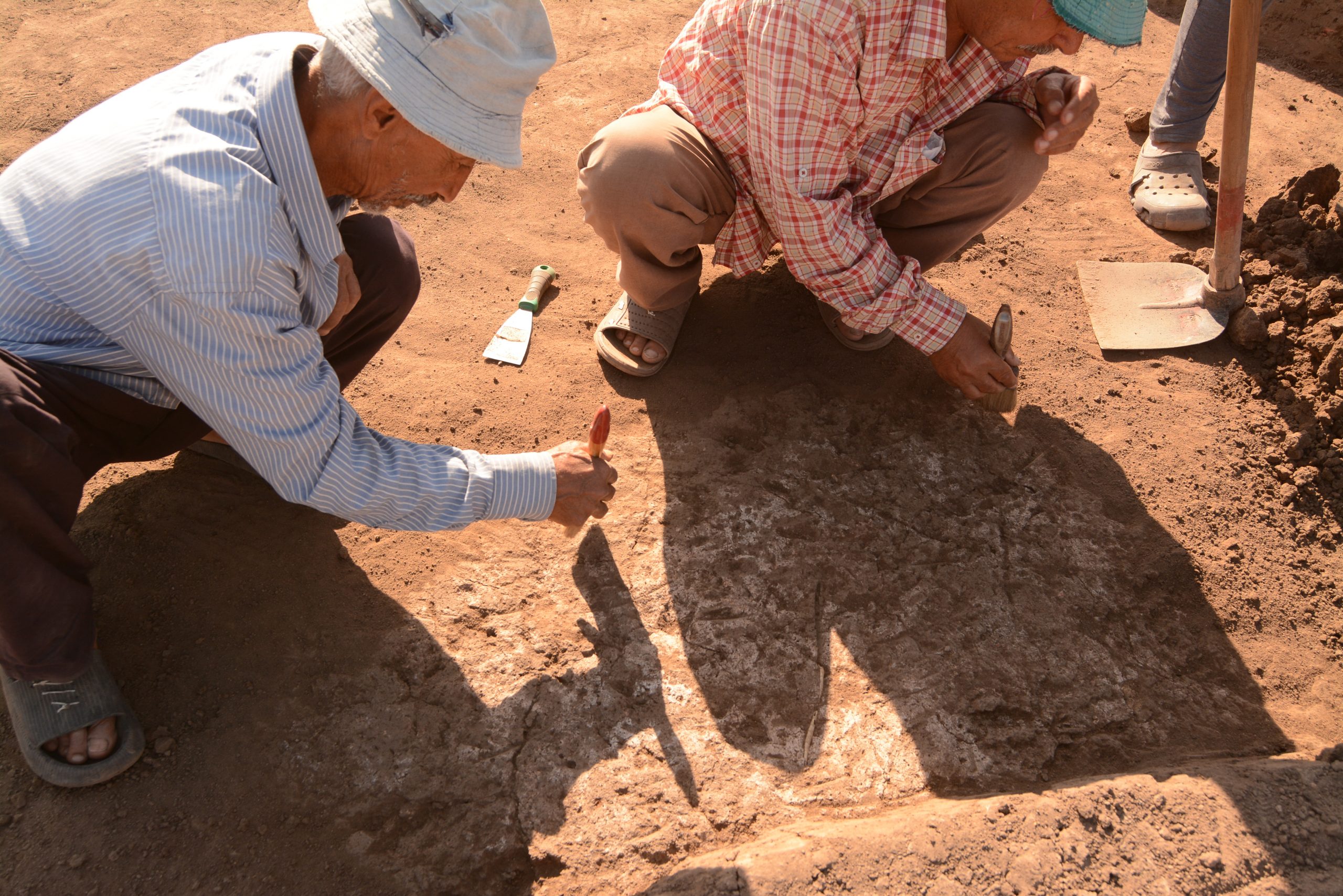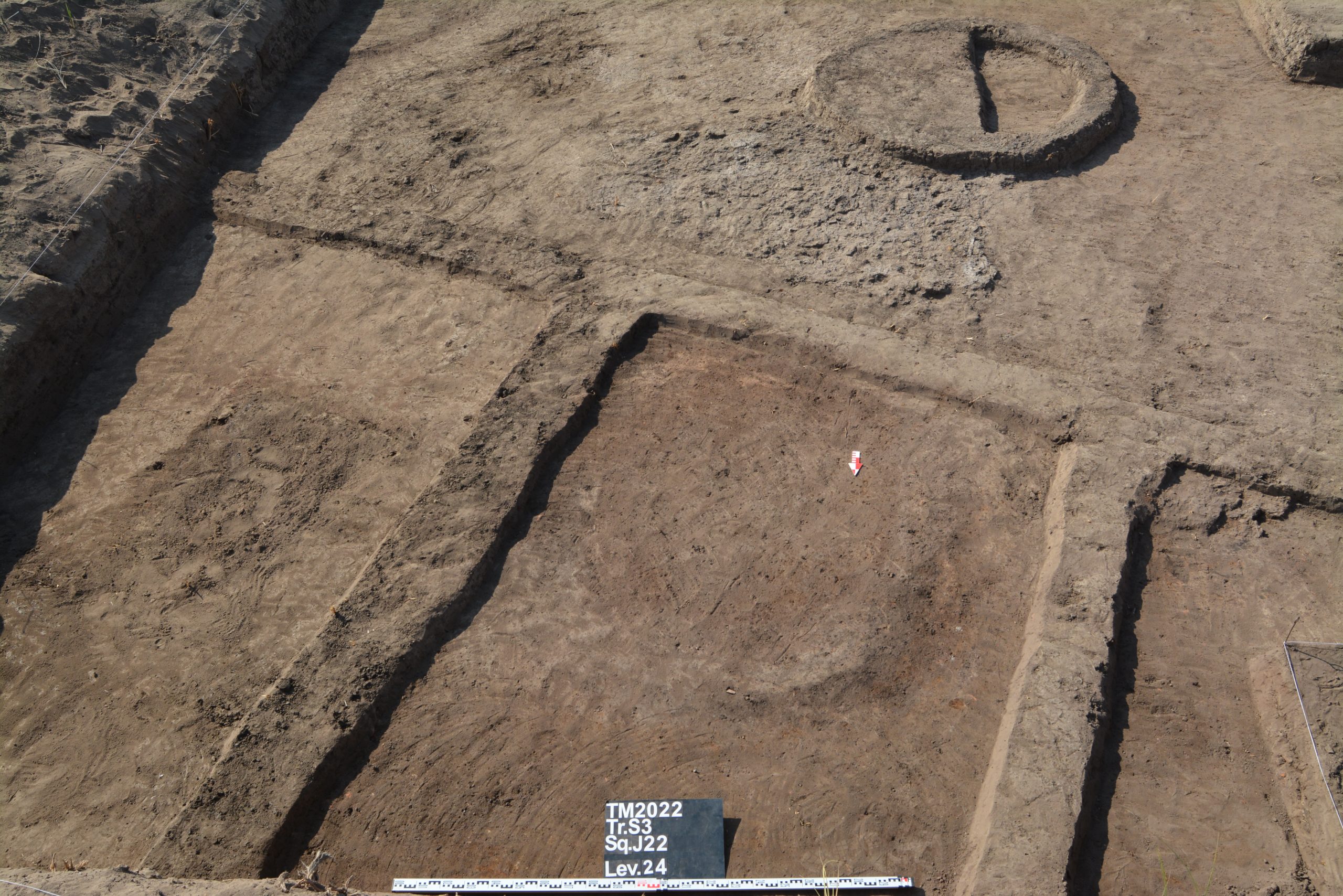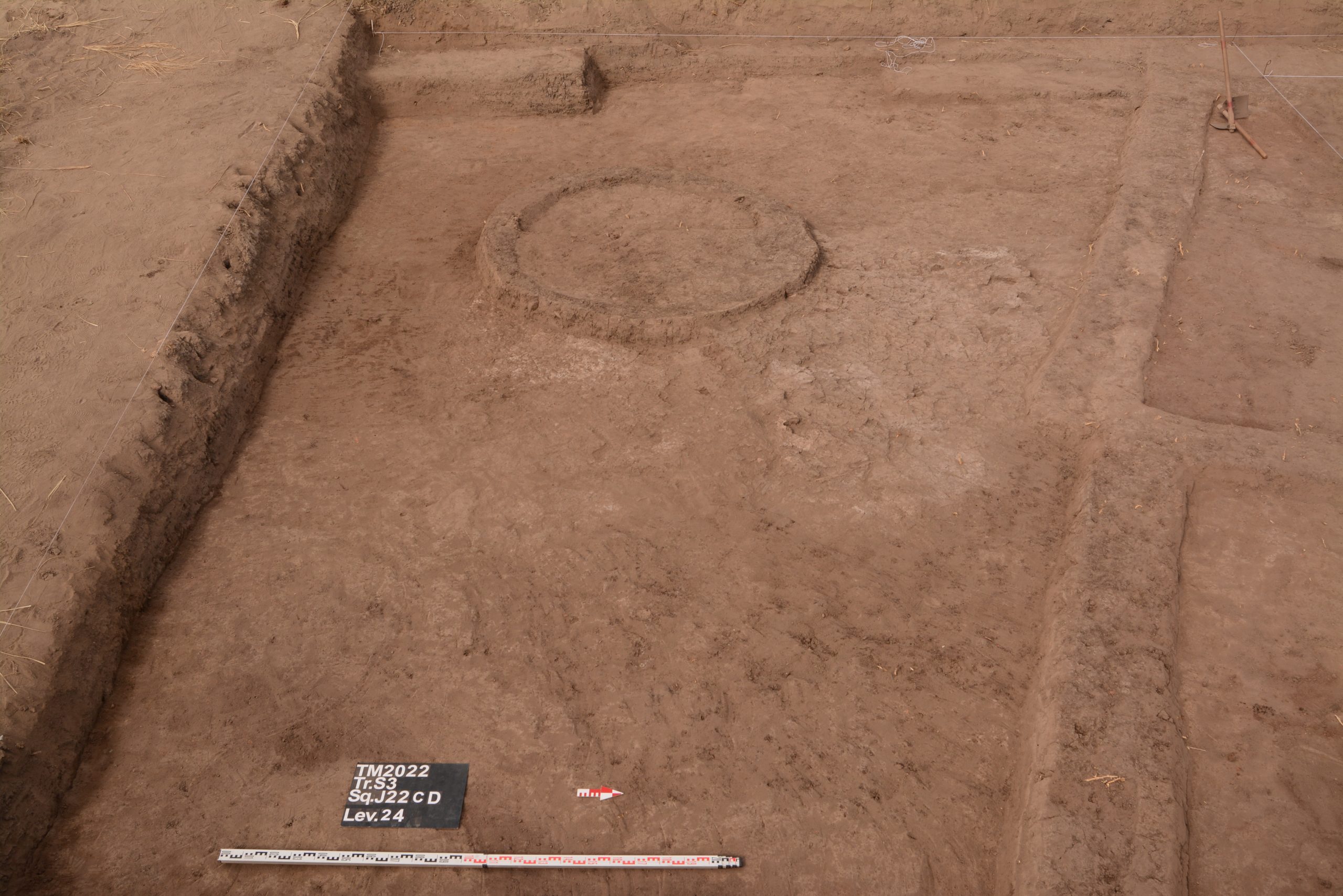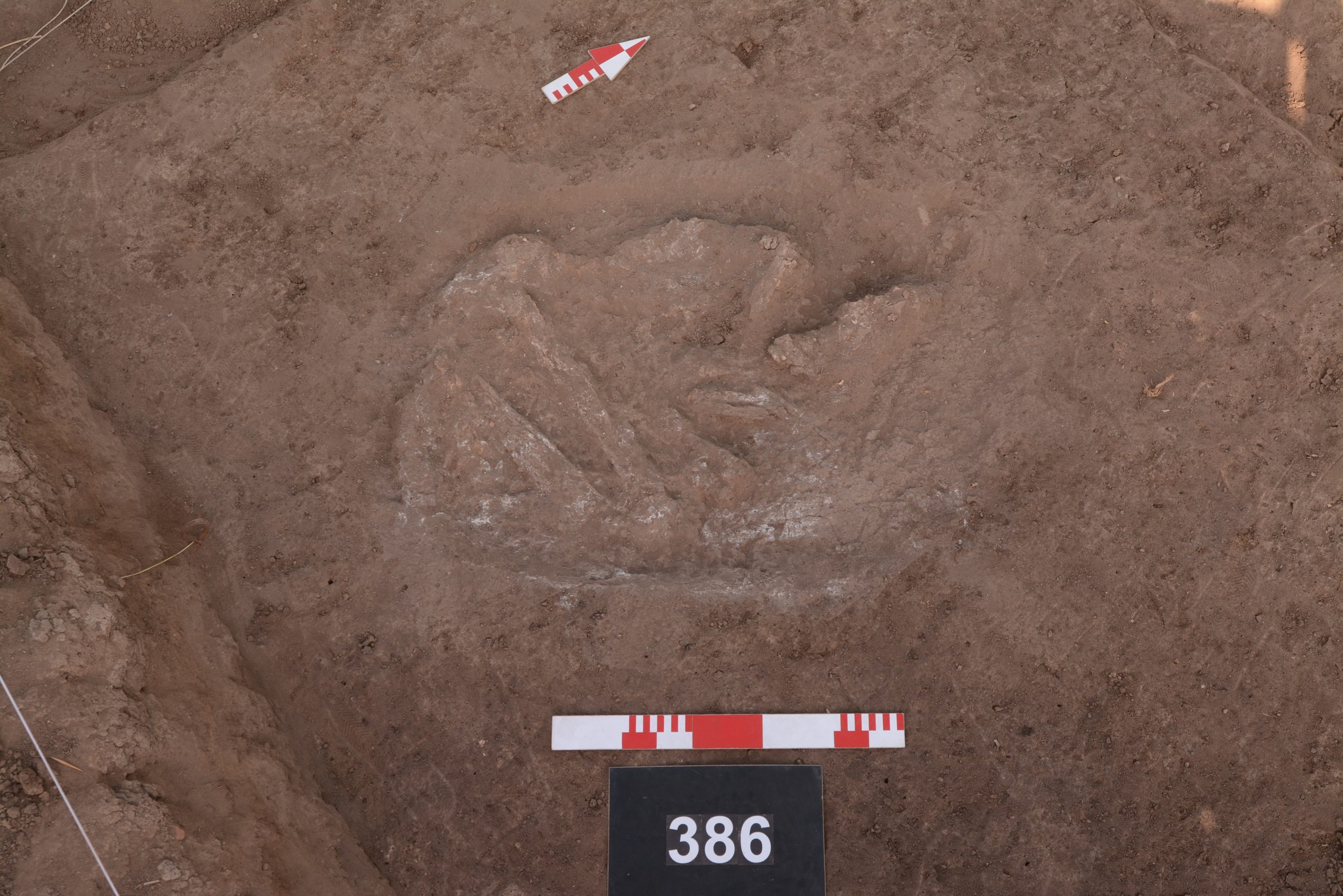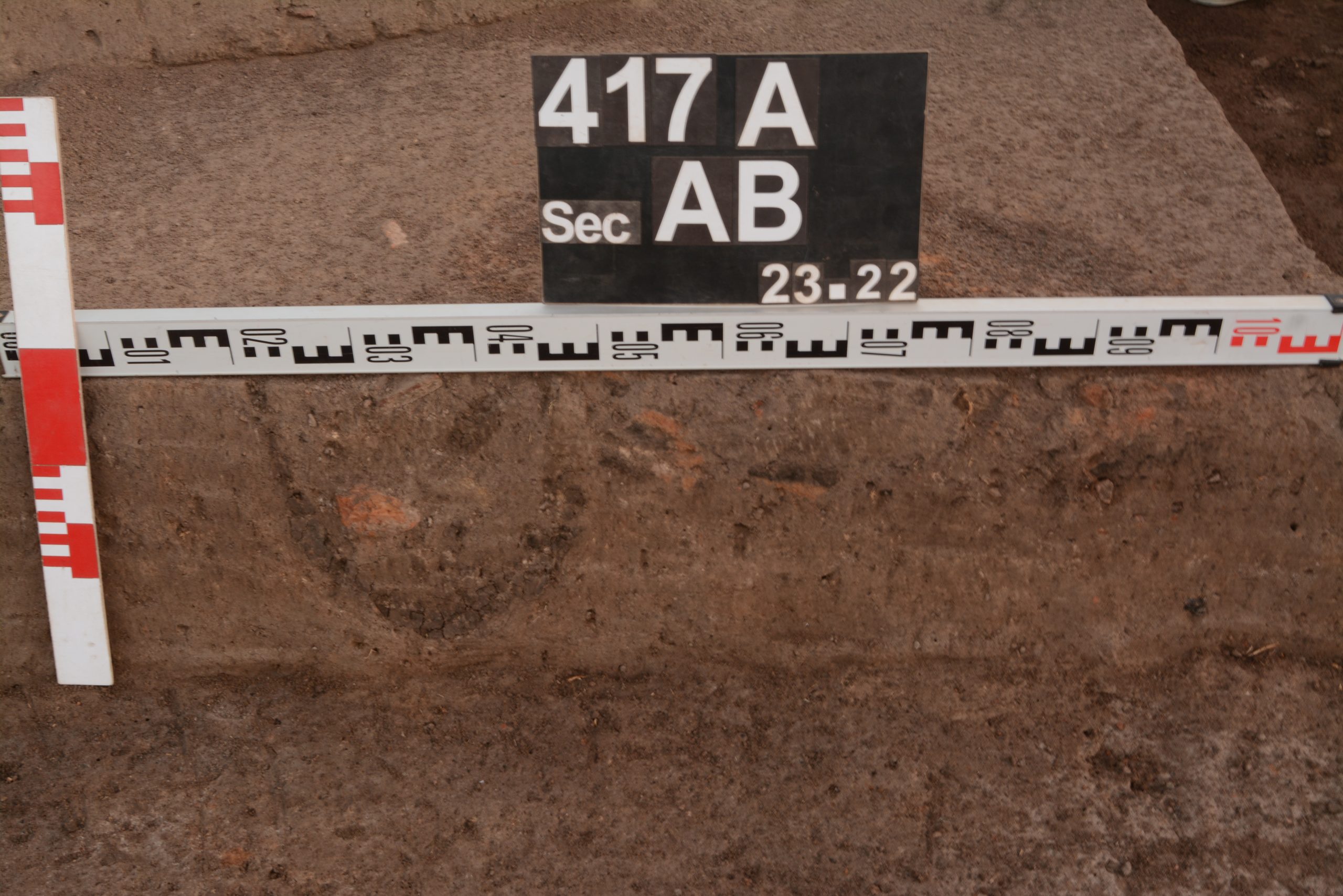Małecka-Drozd, G. Bąk-Pryc, M. Kazimierczak, K. Lajs-Klose, N. Puschhaus, M. Jucha
Tell el-Murra is located in the northeastern Nile Delta within the same settlement cluster stretching between Mendesian and Pelusiac Nile branches. It was occupied from the time of the Lower Egyptian Culture until the end of the Old Kingdom, with possibly hiatus during the period of the Nagada IID2/IIIA1. Research at the site have started in 2010 and continued until 2018, resuming in 2022 after a 4-year break. The scope of works included excavations within trench S3 (the cemetery area) and study work on artifacts acquired during previous seasons. The main purpose of the fieldwork this year was to answer a question if there are still older graves beneath or the cemetery was founded above the settlement remains. At the beginning of the season, two more graves were found in the centre of the trench S3: the pit-grave (no. 16) and the grave with coffin (not explored). Very soon, directly below the graves, rectangular mud brick buildings and a large silo in the courtyard began to appear. Remains of floor level around and beneath the silo reveal imprints of straw, what indicated on grain storage and processing at the site. Within buildings located north and west of silo, series of rooms containing hearths was exposed. The biggest hearth contained pieces of bread moulds. In the room, around the hearth, there were querns, grinders and flint tools. The exposed building remains should be consider as simple residential and economic quarter of the settlement, dated to the Protodynastic period.
The study work included documentation and analysis of artifacts falling into a number of categories: ceramic and stone vessels, flint tools, jewellery and adornments, seals and tokens, ceramic and copper tools, figurines and palaeobotanical material. Most of them have been prepared for full-scale publication. As a results of the analyses carried out, the nature of the settlement at Tell el-Murra as a typical site of its period, well rooted in local tradition, was confirmed. On the other hand, the range of activities in which local community benefited from a long-distance exchange of goods and raw materials, presumably with regions as distant as middle Egypt and even Nubia, is indicated.
